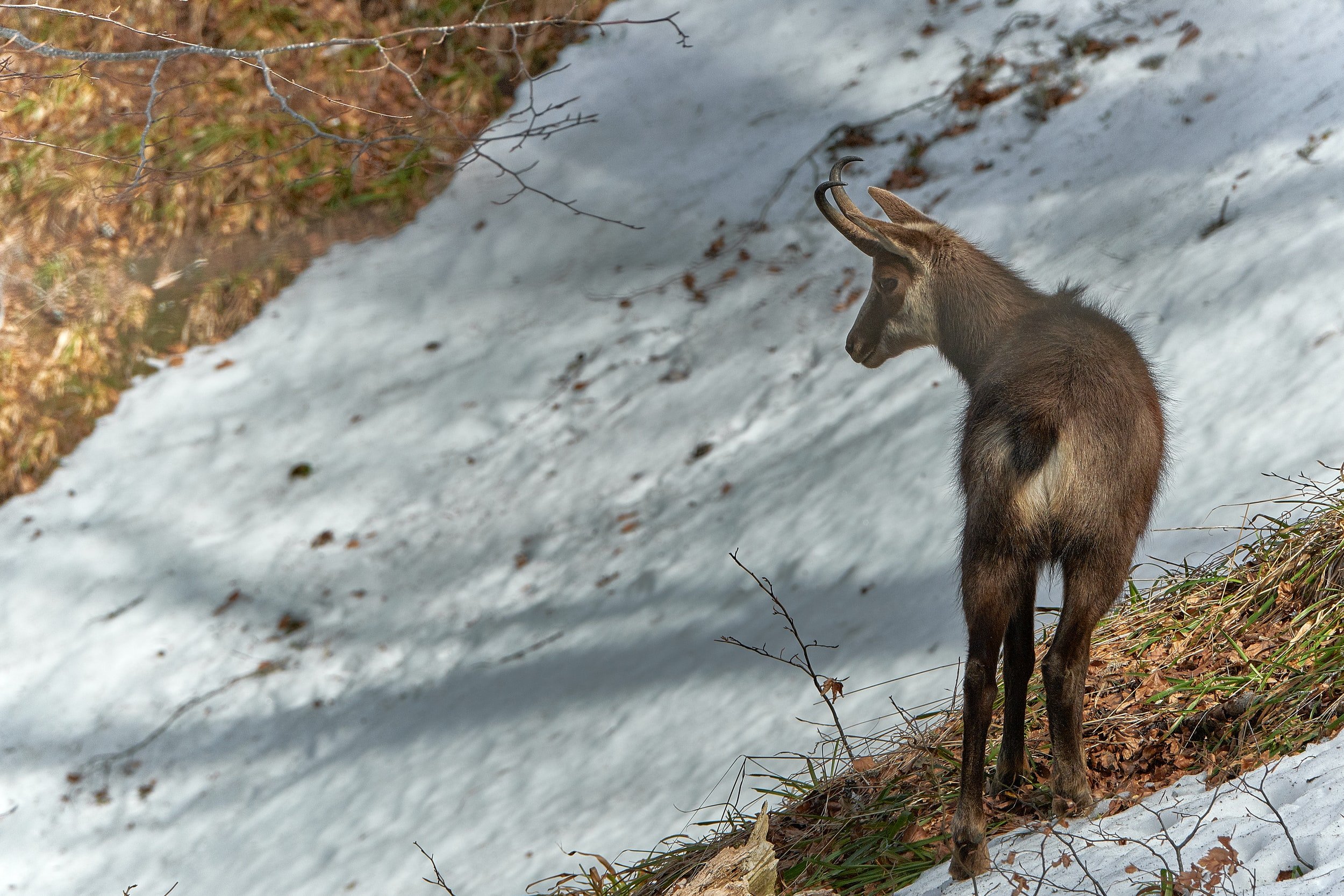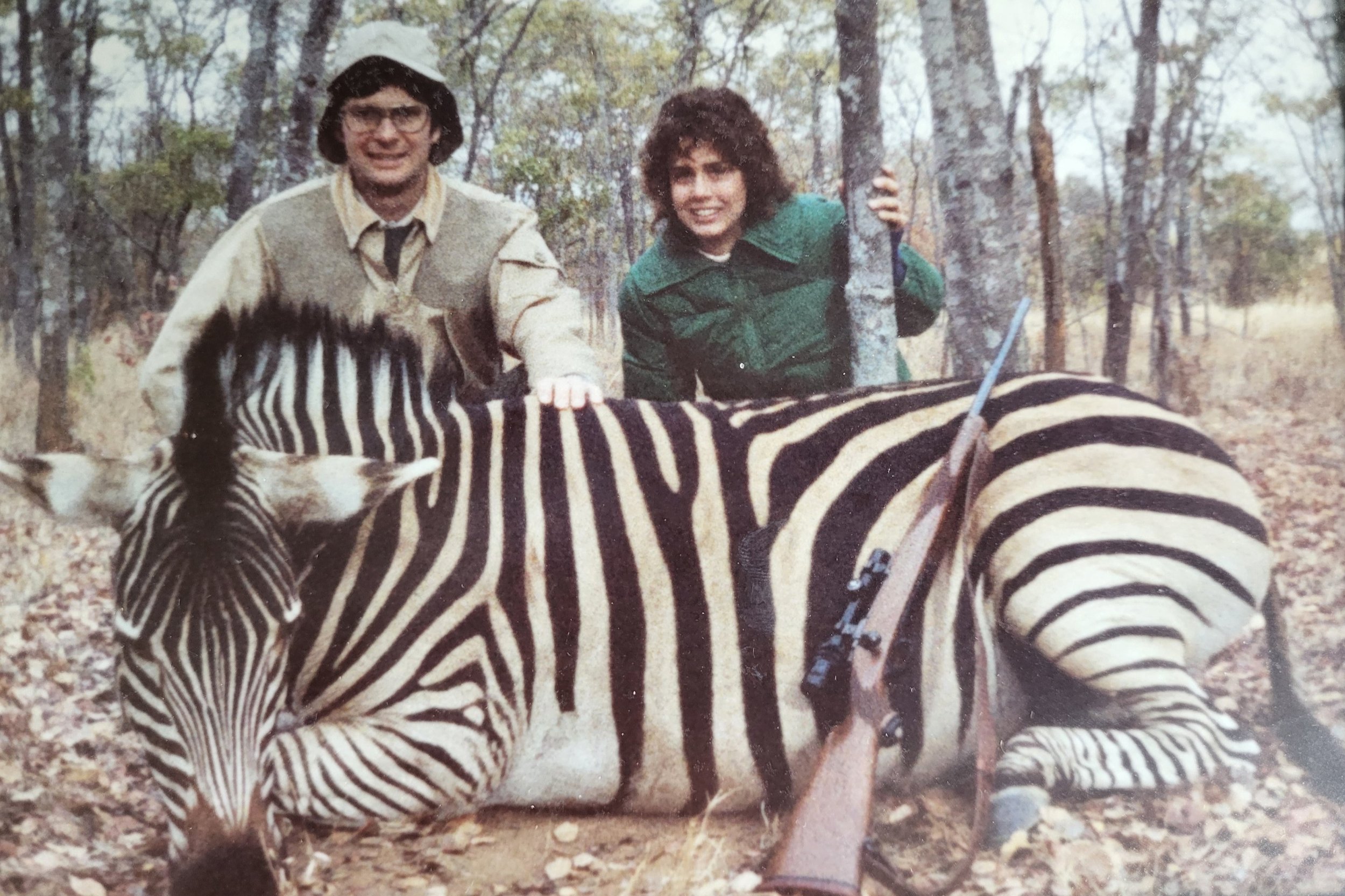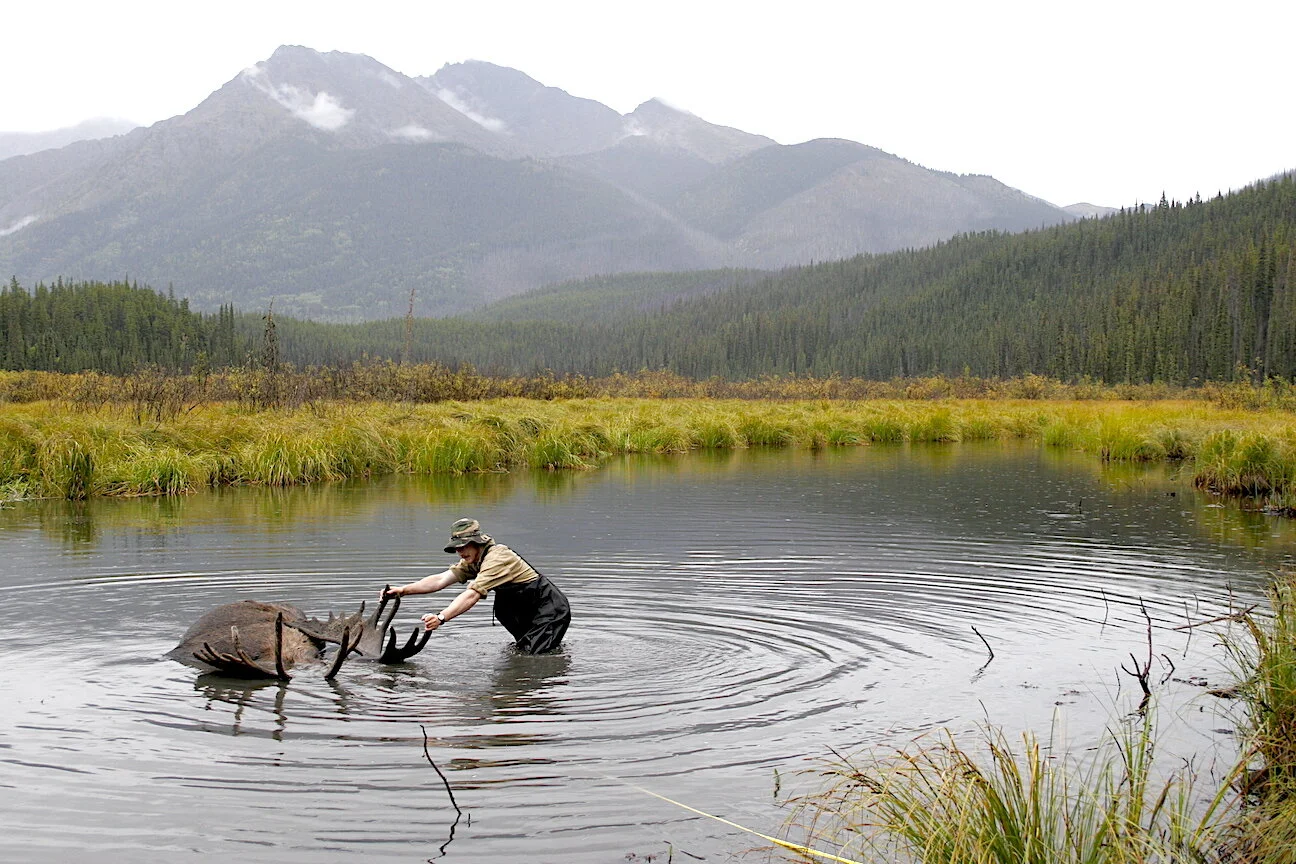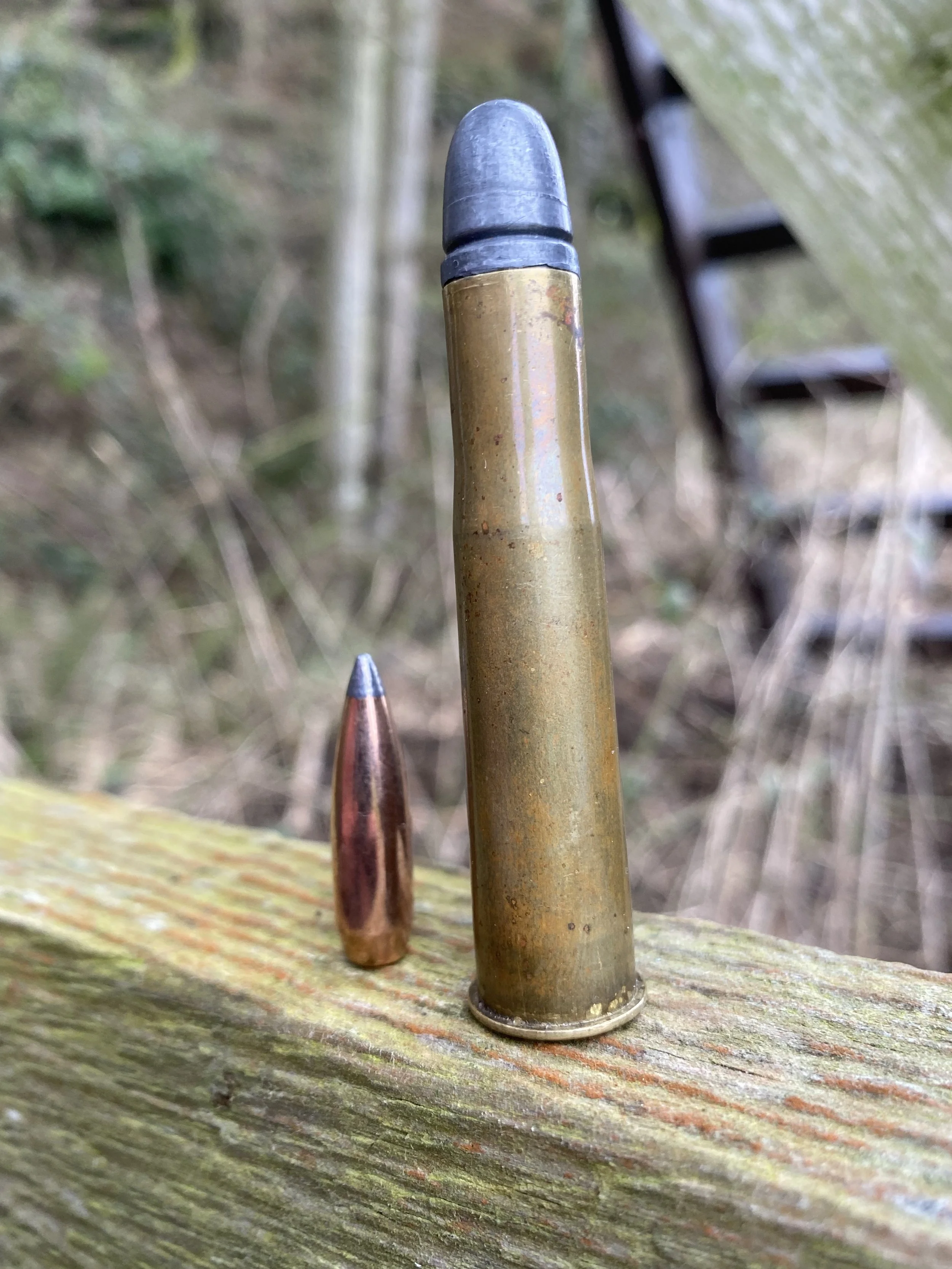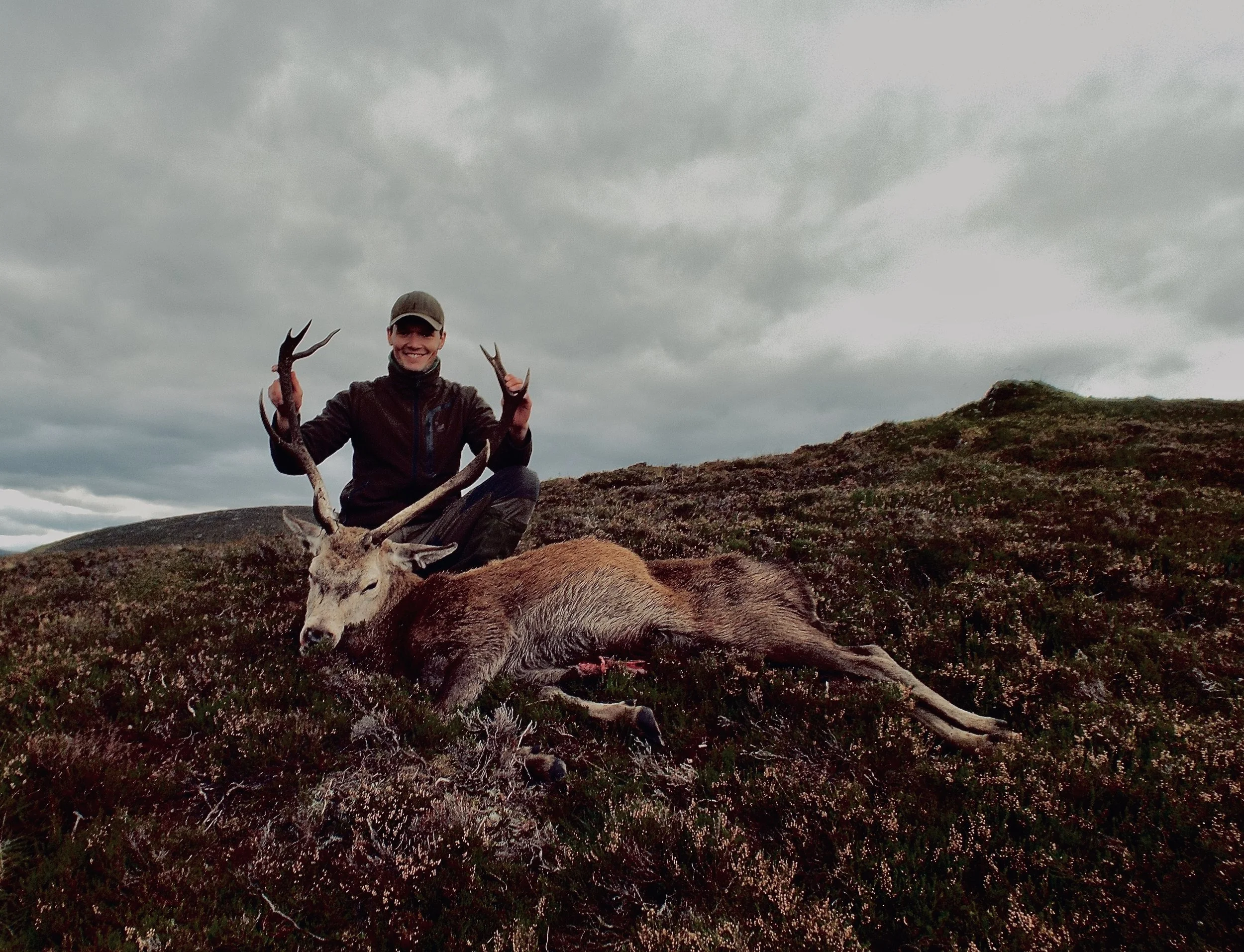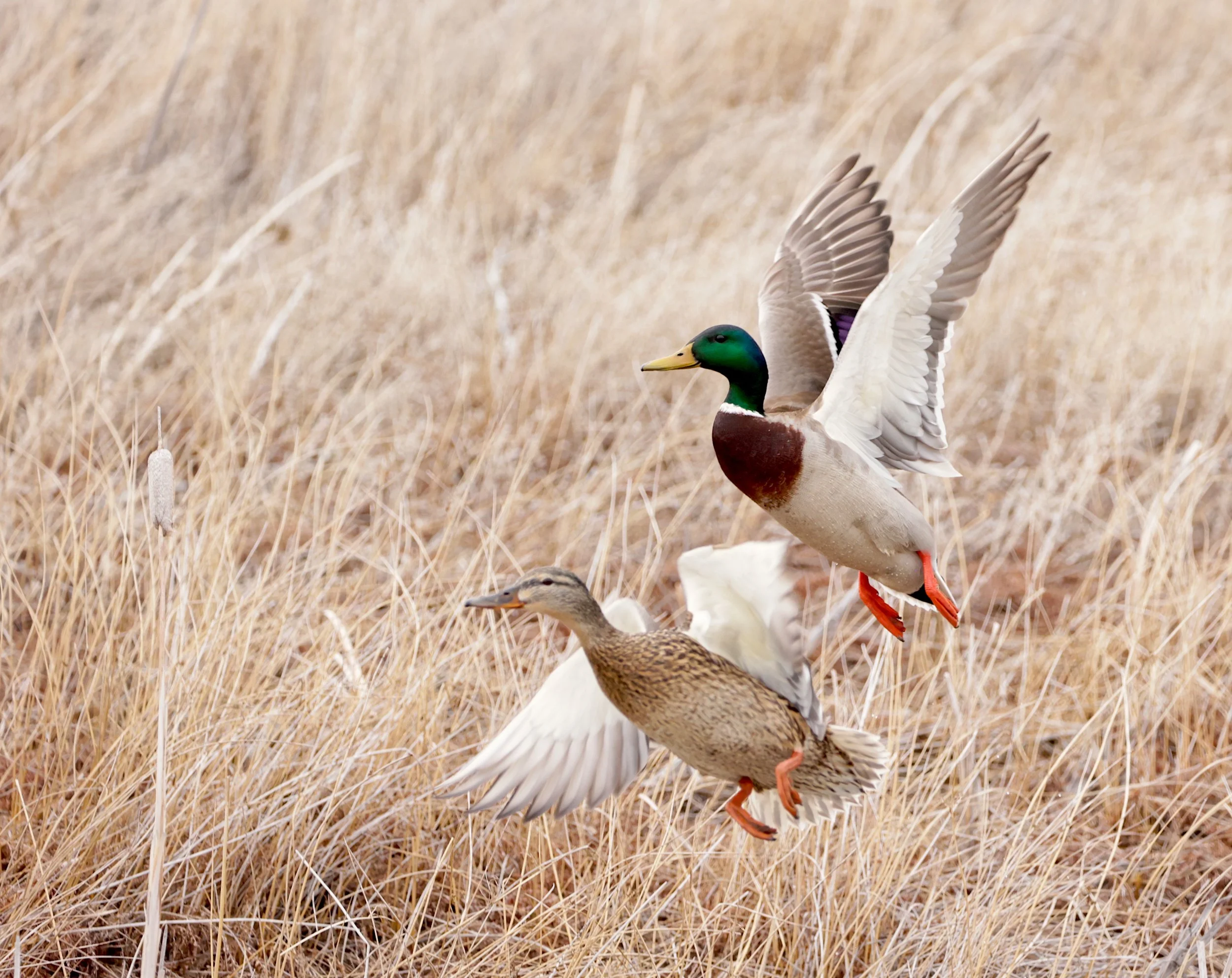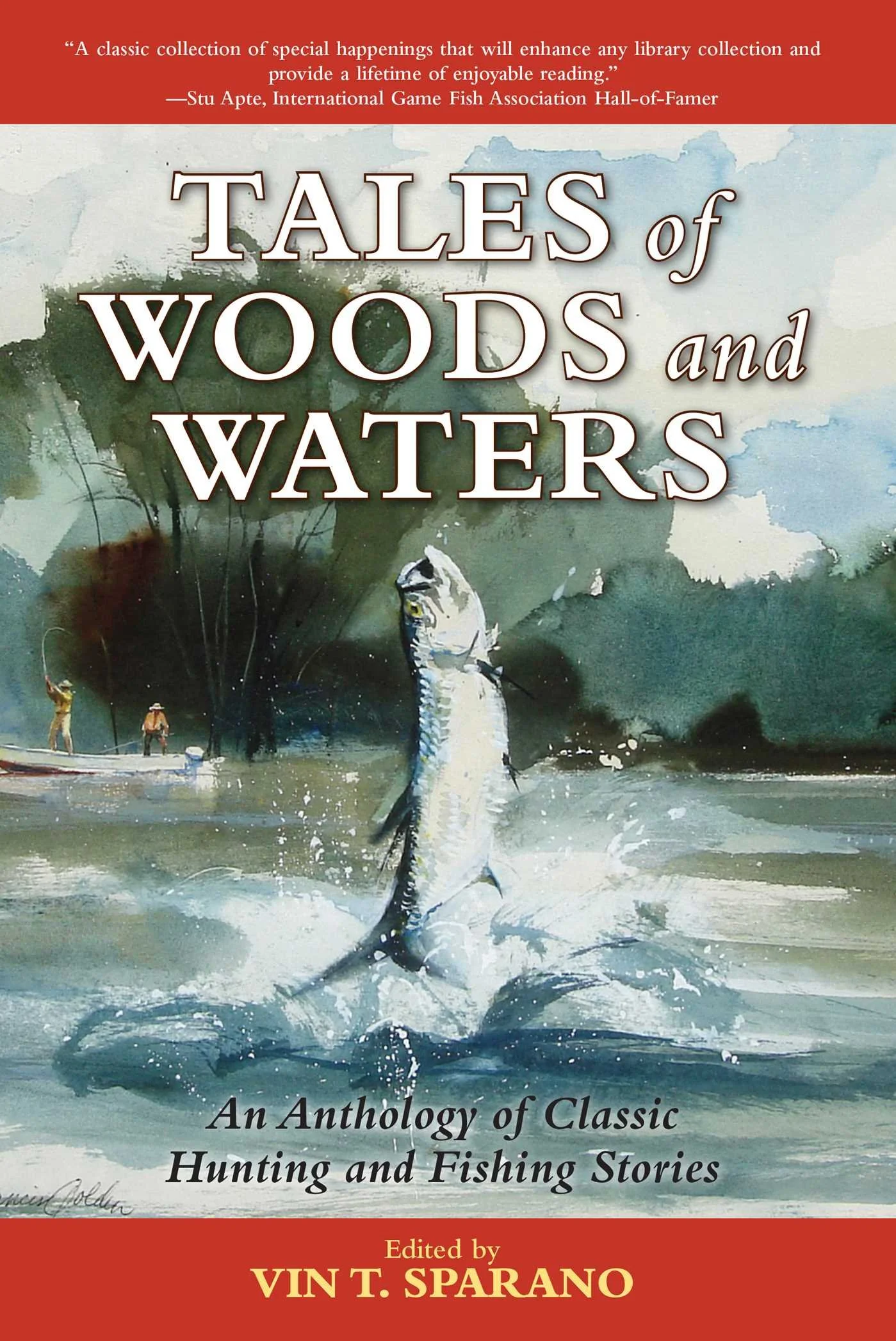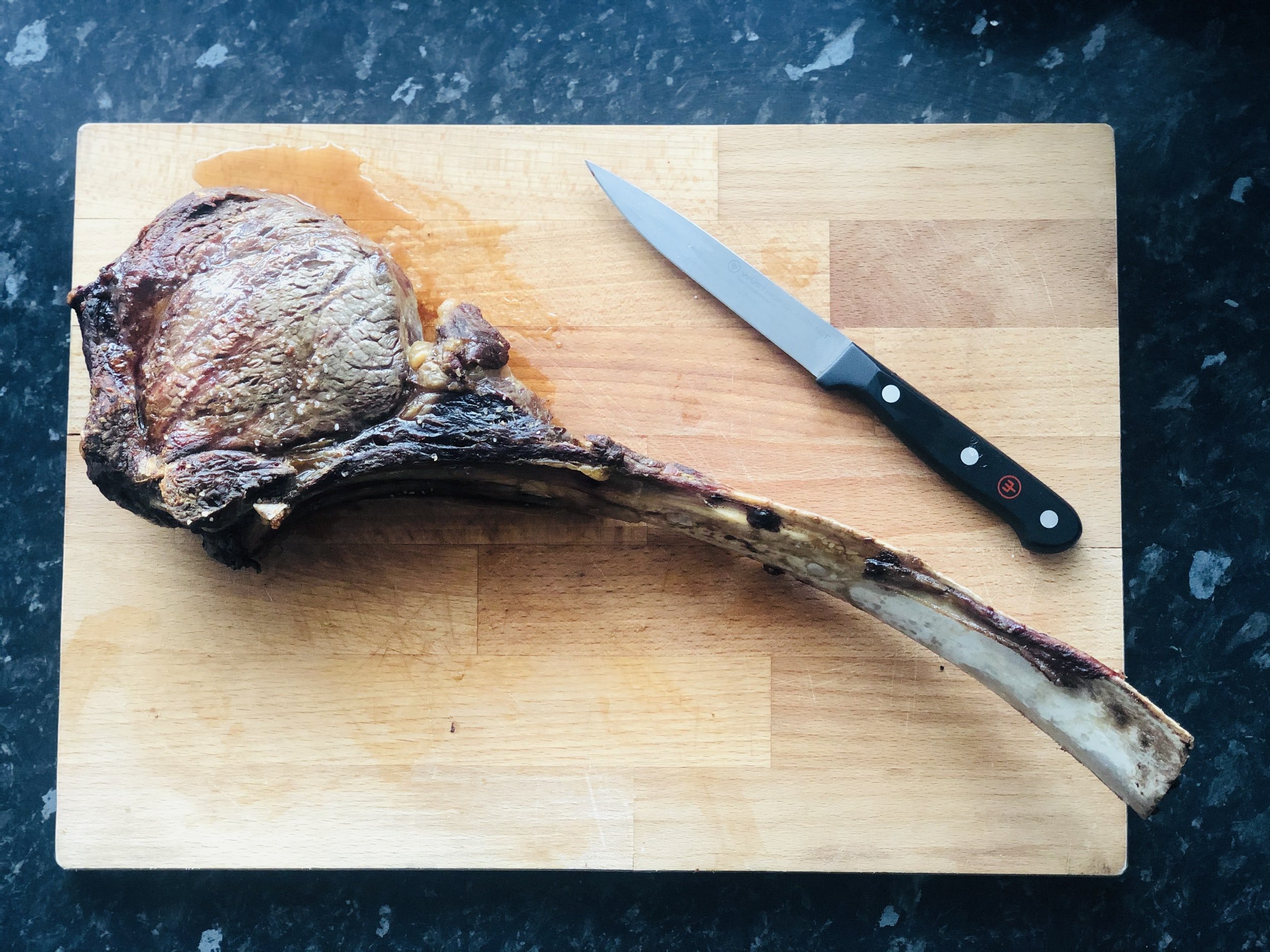Black Devils of The Alps
They start from the base, rising with bumps, bruises, and little rings. At last, they turn back, bending to form a bow. With their thick bases, a pair of them sits atop a white face with dark, lengthwise stripes. Every European mountain hunter, I among them, dreams of this trophy -- the horns of a chamois.
The alpine chamois calls the European Alps its home. They can be hunted in Germany, Slovenia, France, Austria, Switzerland, and Italy. Austria and Slovenia are the most popular with traveling hunters, and the latter is closest to my home in western Germany, so that’s where I journeyed for my first chamois hunt.
The Karawanks mountain range is part of the southern side of the alps, with peaks rising to over 7,300 feet. Red deer, roe deer, mouflon sheep, wild boar, wolves and bears are the hunters’ big game roaming these mountains. The alpine marmot, a large ground squirrel, is a highly desired small game species.
Chamois are one of the most affordable of the mountain game species these days. Even big trophy rams (65- to 130- pounds,) or ewes (55-100- pounds) for the matter, cost nowhere near as much as ibex, sheep, or other mountain game. Therefore, chamois are considered a perfect “starter” species for mountain hunting. But many hunters become obsessed with pursuing them, the hunt becoming an annual affair. Graceful and strong, chamois test one’s stamina and marksmanship. The rut late in the year is a spectacular time to hunt. Bucks become easier to spot because they chase one other on the steep slopes. Ferocious rut fights among these black-coated males have earned them the nickname “black devil.” Sometimes their battles for females have fatal ends.
In early October, I packed my rooftop tent and went on my journey. The plan was to stay in the woods instead of retreating to a small cabin after each day’s hunt. The roar of the red stags was still on, and I wished to hear them during my time there. After arriving on a Sunday afternoon, I met my guide Primoz for the first time. We sat in a bar in the small town of Trzič and discussed the upcoming hunt and my desired trophy. I told Primoz I wanted to keep shots to 220 yards or closer. Chamois are small, some weighing as little as 20 pounds dressed.
Bad weather was predicted and, sure enough, it haunted us for the duration of my hunt. I’d hoped to go to the very top of the mountains, but the wet weather made lower elevation stalking and still-hunting more promising. Adapting to circumstances and hunting accordingly is critical for success, especially in the high country.
Prepare for steep and rocky mountains if you want to lay your hands on a chamois.
I followed Primoz as he wheeled his pickup truck into the mountains, leading me to a camping spot close to a gravel road right inside the hunting ground. Fir trees surrounded a more or less flat niche on three sides, with the fourth side offering a spectacular view into the mountains around me. After my guide left to finish the last evening red stag hunt with that week’s client, I set up my camp. I hung a bag of water in a tree for showering, built a “kitchen” on a few old logs next to the car, and set up my tent. I enjoyed my evening meal while admiring the scenic splendor of the neighboring hills.
I love this, being out in the wild on my own without electricity or running water. It’s elemental. Just the basics — cooking, reading, sleeping, and most of all hunting. Social media, work, and other everyday hassles seem far away. Life slows down, a welcomed break from the speed of my regular days at work.
I retreated to my tent early, right after darkness fell upon the land. A few more pages in my book and my eyelids were heavy. The alarm was set for 4:45 am, and I wanted to be on top of my game. The rain started at 2 am. That and anticipation did their best to keep me awake all night. But when the alarm went off, I felt great anyway. I climbed down from my car-top tent and stepped into mud. The temperature had fallen to the 40’s. Sometimes hunting is uncomfortable. The Alps are a great setting in which to hunt uncomfortably.
The European Alps offer breathtaking scenery, if not covered in fog.
Primoz arrived at 6 am and drove us to the first vantage point. I was still dark, but as it brightened we saw that fog and clouds blocked the higher elevations. We drove a few hundred feet lower and started to still-hunt through the dripping timber, our boots squishing and slurping on the soaked ground. A chamois trophy was not going to be a given. Or at least I thought so. Not long after we left the truck, we froze at the sound of something heavy fleeing from us; caught a glimpse of a red stag disappearing into a wall of fog. A hind stood 45 yards away. She hadn’t detected us, but within moments decided the stag must have fled for good reason. She ran off, too.
We slowed then. Ten steps farther along exposed a chamois. A big one. The ram was not spooked. He slowly climbed the mountain. We rushed into cover and had a perfect view. I quickly decided that this was not the buck for me. Not because of the trophy, that was magnificent. But barely 30 minutes after we left the car, I did not want my hunt to end. I knew I might leave Slovenia without a trophy or with less than I had hoped for, especially in weather like this, but a trophy is only part of the equation. The adventure and experiences on a hunt far outweigh the importance of a skull hanging on the wall. Passing up this shot was a risk I was willing to take.
We were happy to watch the buck for 20 minutes or so, just a few hundred paces above us. He finally disappeared into the trees and clouds. We, too, went higher and higher, wandering across gravel and mossy boulders just below tree line. Fog rolled in and out, often reducing visibility to 50 yards. Those two hours in the mystical high country woods marked some of the most beautiful hunting I have ever had the pleasure to enjoy. Just hunting in that breathtaking country with the bad weather mood was worth the 650-mile drive.
At noon, the higher peaks and plateaus still were invisible. In the lower, wooded parts of the hunting ground, where chamois seek shelter during the day, our wanderings would likely disturb and spook more game than it would reveal, so I retreated to my can and tent, capitalizing on short weather breaks for cooking, getting to know my immediate surroundings, and resting a bit. I found many deer tracks, fresh and not even 100 yards away from camp. I hoped I’d see some of them during my stay.
The weather was predicted to improve for the evening hunt, and Primoz and I were out again at 4 pm. We chose to stalk into a range of well-used game trails that led to a pasture with a salt lick. We waited there for any movement. The clouds spared us more rain, and we could enjoy a quiet evening for the first hour or so. Primoz, tired from packing out a client’s stag the night before, napped until rolling stones woke him. I set up my trekking pole to support a steep uphill shot, but before we could see our prey, chamois alarm whistles rang down to us. The wind was perfect. We were out of sight. But I barely glimpsed two chamois before the fog swallowed them.
We waited, then snuck to another clearing close by, hoping chamois had moved just a short distance. But evening passed without another sighting. Well, not entirely. Later, while brushing my teeth in camp, a hind snapped branches 20 steps behind me. I doubt she expected to run into a human brushing its teeth.
The following day was rainy again, but at least the roars of stags echoed from the neighboring slopes. It was fantastic listening to them while preparing for the next stalk. We saw more red deer and another chamois, but they all spooked before we could make them out. Primoz and I were drenched, but we kept on hunting until early noon. My camping spot transformed into a small pond. It was good to spend a few hours in a tent up 6 feet above the mud.
The evening was dry again, but our long and steep stalk through mountains closer to my camp brought no further sightings. It was fascinating, though, as a friend of Primoz tried to push chamois up a gully where Primoz and I waited. Nothing showed up, but I appreciated my guide’s efforts. Sitting on a rock waiting for game, with 50-yard precipices on three sides, towering clouds around us, was enough compensation.
The next morning I was growing concerned. Had I made the right decision when I passed that first buck? You can only control what you do with the time you’re given. A few stars sparkled as I waited in the dark for Primoz. Stags roared in the distance. I took both as a good omen. Alas, the high peaks were still covered with fog.
The next and final day would be even wetter, starting with heavy rain at 9 am. It did not stop until the following day when I was driving back home. So only a few dry hours remained to find success on my first mountain hunt.
We again chose a spot on a lower elevation and reached it just before dawns dark blue brightened to grey. We sat on a grassy area on an otherwise rocky shoulder, right next to a few gnarly pine trees. We focused on the next shoulder of the hillside. A saltlick had been there, and chamois still visited it, according to Primoz.
A quick check with a rangefinder said the stone on which we hoped for chamois to show was 215 yards away. Well, that’s not very far for many hunters and shooters. But woodland hunters like me rarely pull the trigger on game standing that far away, especially on game weighing between 25 to 120 pounds on the hoof, depending on age and sex.
A trophy buck on a snowy slope. Hunting chamois can be challenging.
Not 15 minutes into our sit, I glanced over to that next saddle and noticed a dark spot. The binocular confirmed it was a chamois. But low light prevented us from distinguishing sex or trophy class. We waited, eyes glued to the glass, Primoz behind his spotter, I peering down my riflescope. Seconds faded into minutes, minutes added up. Finally, 20 minutes later, we were sure it was a young adult without teats. Probably female. With both sexes being legal, according to management goals, Primoz decided it was a good animal to shoot. He gave me his okay, and I aimed.
The .30 caliber bullet, launched from my .30-06 bolt action rifle, found my quarry but entered 2 to 3 inches too far back. That is a lot when hunting chamois and could prove too much. With a hunched back, the ewe turned a corner and was gone. Buck fever, I guess, as I knew I’d rushed the shot despite all the time I had to prepare myself.
I fretted, worried. A gut shot? My worst nightmare. Primoz was calm. The bullet would be sufficient if it hit where we thought.
We approached the spot from the far side, following a game trail. Before we even reached the area where the ewe had stood, I saw her sprawled in a few bushes. She’d dashed just fifteen yards before collapsing. The bullet had passed through the back of the lungs and liver. Primoz was right; it was enough.
The young ewe was not the biggest chamois encountered on this hunt. But it was a perfect first for the author.
The ewe was perfect for a novice mountain hunter like me. A beautiful coat, especially the face. Small but still wonderfully curved horns. We dressed her and estimated her to be around 25 pounds after that—a small target, compared to deer or other mountain game. I was glad I’d judged my limitations correctly and that it was a one-shot kill. We took some pictures, and I tried to soak in my surroundings.
My hunt ended there. I could not have been happier spending time outdoors, in a tent, and without electricity. Success on the last day, a taste of mountain hunting, and a goal to return for another hunt. A big buck could have been mine, but I know it was right for me to hunt more than half an hour. I’d probably decide the same if I was doing it again. How tedious would hunting be for us if we’d always bag the big ones?
I’d intended to leave the following morning, but rain started early and intensified soon after we got the ewe packed out. My cozy camp had become a cold, uncomfortable bog. When branches started falling on my car and tent at 2 A.M., I broke camp. I barely made it out of that wallow. After that, the 10-hour drive home was pleasant and uneventful.




